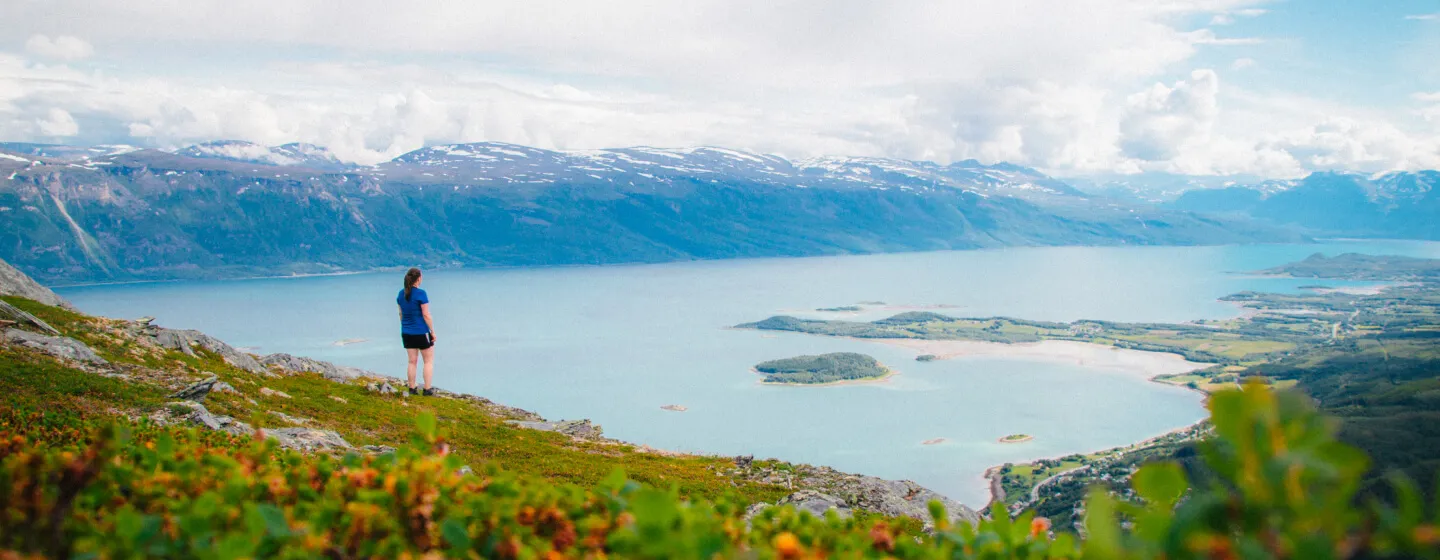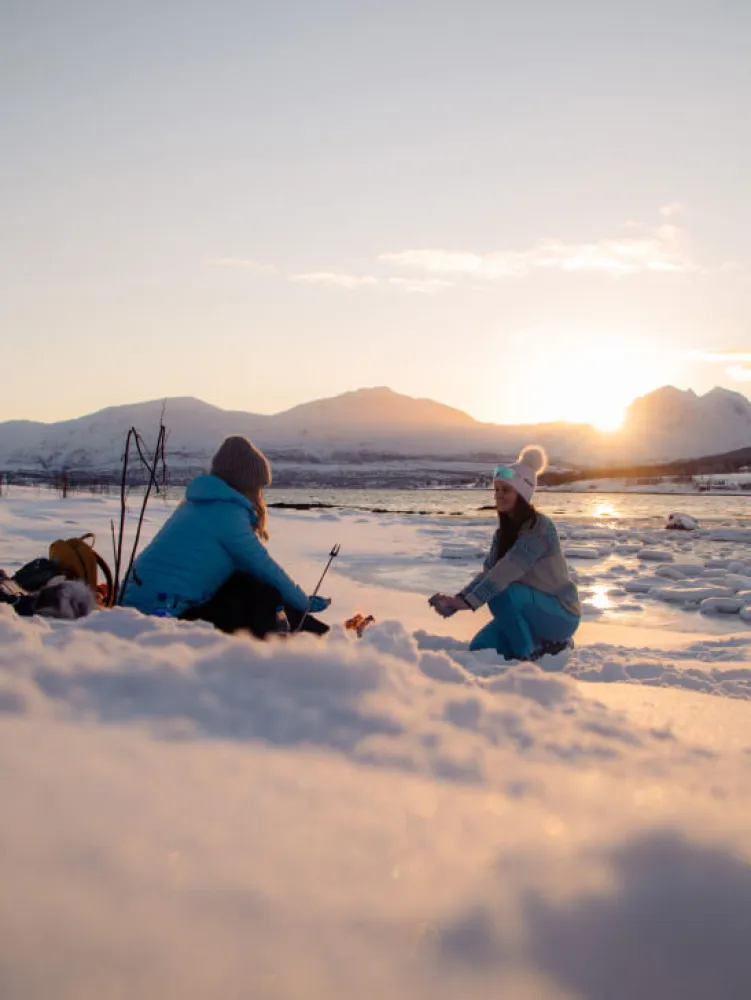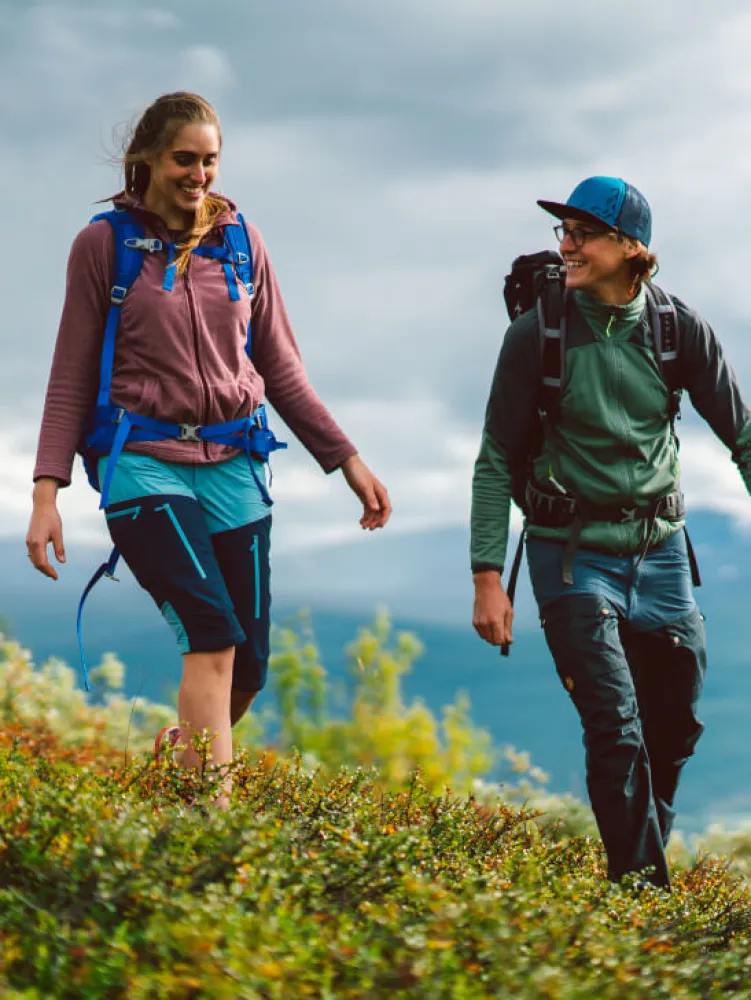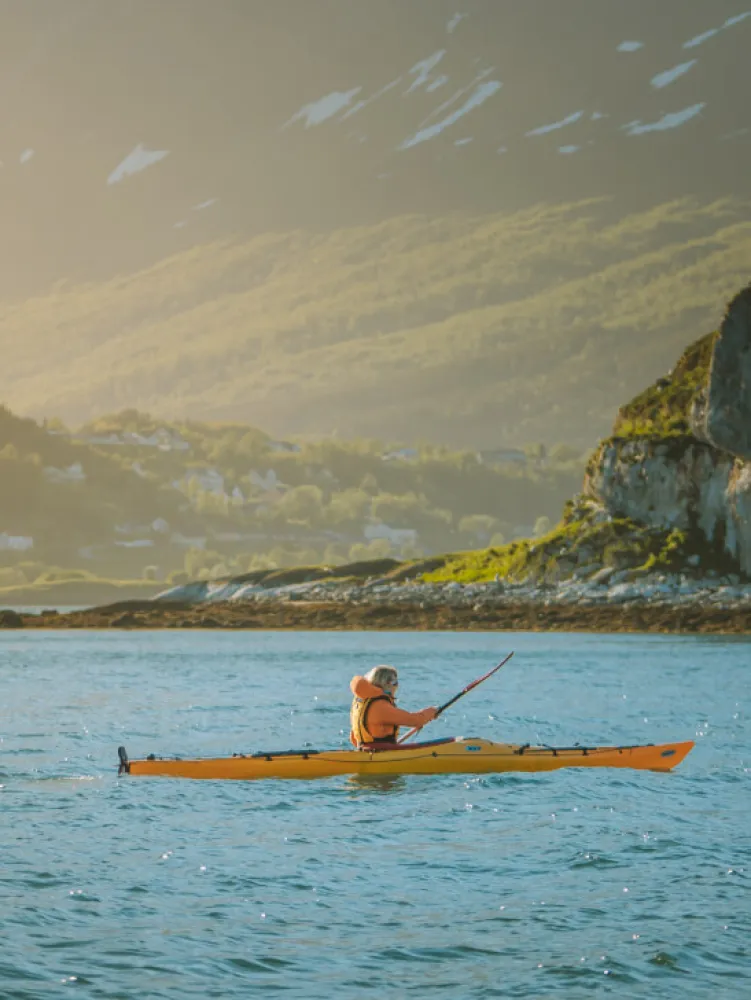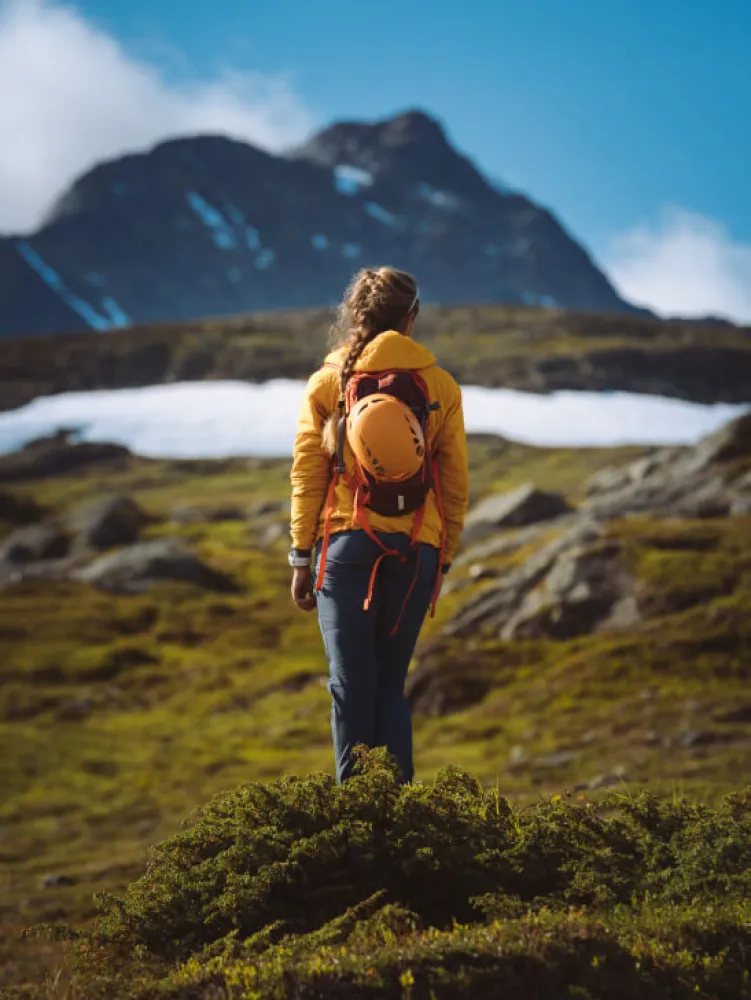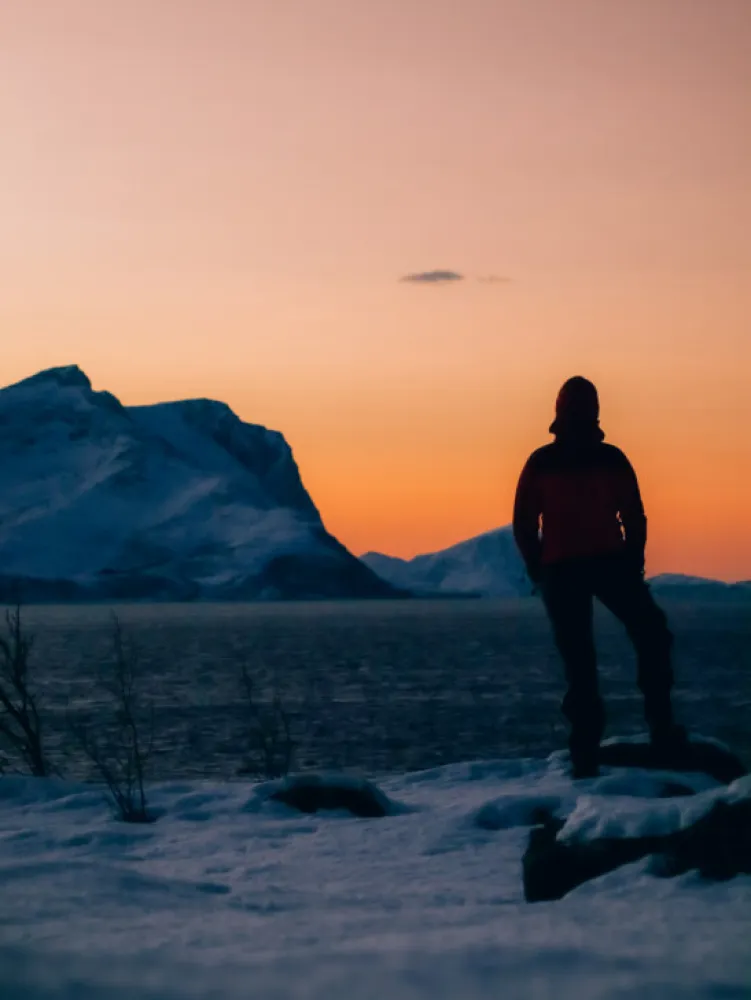Urban experiences meets raw Arctic nature
The “Right to Roam” - freedom with responsibility in the great outdoors
The "Right to roam" allows for unrestricted access to Norwegian nature, along the coast, in the forest, or in the mountains. The "Right to roam" also requires that we take care of nature and leave it as we found it, so that everyone can enjoy it. Including future generations. This helpful article has been created by the Northern Norway Tourist Board, in collaboration with the lawyer Marianne Reusch.
Is it really true that we are allowed to do what we want, where we want in Northern Norway? Northern Norway Tourist Board asked Marianne Reusch, Norway’s leading legal expert in the field. She says that the tourist industry has sometimes made great play of the fact that people are allowed to go where they want, and played down the associated responsibilities and restrictions that come with it. We therefore decided to take up the challenge of explaining the situation a little more clearly.
The "Right to roam" applies to the great outdoors
Where are we allowed to go freely? We do not have the "Right to roam" in densely populated and urban areas or on private residential plots and agricultural land. On golf courses and industrial sites such as quarries, and in churchyards and other areas which are used for a particular purpose, we must follow the safety and general rules of conduct that apply there.
However, the "Right to roam" applies out in the great outdoors, along the shoreline, in forests and on mountains above the tree line, even on private land. There is generally no human activity in these areas, except perhaps for grazing goats, sheep and reindeer. These areas, which make up most of Northern Norway, are accessible to the general public for recreational purposes. Getting about in nature is regulated by the Norwegian Outdoor Recreation Act of 1957, and assumes that respect and consideration will be shown to farmers, landowners and nature itself.
Who owns the land?
In Nordland and Troms, the area from the coast right up to the mountain summits is often owned by numerous private landowners, generally farmers along the shoreline or at the bottom of the valley. A fishing lake or walking trail may therefore concern many landowners.
Inland, Statsskog, the state-owned forestry enterprise, is a major landowner.
In Finnmark, 95% of the land belongs to the Finnmarkseiendommen landowner enterprise, which is jointly owned by all the inhabitants of Finnmark.
Hiking freely is a priviledge
In principle, you can walk on foot anywhere you like on open land. Marked trails are always problem-free, but virgin forest, pasture, mountain terrain and shorelines are generally also accessible. Sheep and reindeer on open pasture must of course not be disturbed. Fences on open land may sometimes seem irritating, but they are there to keep the grazing animals in or out and must not be damaged. You must always close the gate after you.
Camping is allowed for a maximum of two days well away from dwellings
When you pitch your tent in the great outdoors and stay overnight, you must leave the area exactly as you found it. This means you must take with you all your waste and never leave behind anything other than footprints. You can stay in a tent for up to two nights in the same place, before you must strike camp and tidy up after you. You can also stay for up to a week in a tent deep in the mountains, if the area is very remote and rarely visited. The camp must not be a nuisance to permanent residents, so you must pitch your tent a good distance (at least 150 metres) away from the nearest house. You cannot pitch your tent in shelters, play areas, major resorts and other areas that will obviously be used by the general public.
Cycling and fires on open land are a no go
Cycling and riding on open land is fine on trails, but is not permitted away from the trails, except above the treeline. The mountain bikes we are increasingly seeing on open terrain must therefore stick to the trails, except with the permission of the landowner. It is strictly prohibited to light a fire between 15. April and 15. September due to the risk of starting a forest fire. However, you are permitted to light fires on the shoreline if it is obvious that the flames will be well clear of flammable materials.
Motorised transport is prohibited
Marianne is categorical on this point: motorised transport for private individuals on open land, such as four-wheel drive vehicles and snow scooters, are not permitted anywhere. The exception is when the permission of the landowner has been obtained, when the local authority has given a private company permission to transport groups by vehicle or on special scooter trails.
Careful with the cloudberries and don’t pick any orchids
You are permitted to pick mushrooms, berries and flowers. The major exception in the north are the cloudberries. In many places across this region, there are private marshes where the cloudberries are a time-honoured source of income for the landowners. They are often marked by signs. However, you can always eat directly from the cloudberry plant. You are not permitted to pick protected plant species or to take them to plant in your own garden. Special restrictions apply in protected areas, such as landscape protection areas, nature reserves and sea-bird reserves.
Hunting and fishing are restricted
Hunting and inland fishing are not covered by the "Right to roam". The hunting rights belong to the landowners and are often unclear. Many landowners may own the land around a fishing lake or river, but in this case, the problem can often be resolved by asking at the nearest petrol station or campsite whether fishing permits are available for the lake. They will often be able to arrange one for you! Children under 16 can fish without a fishing permit along non-salmon spawning watercourses and lakes if they use an ordinary fishing rod at certain times of the year. Fishing in saltwater is free for everyone, provided they use an ordinary fishing rod (“handheld implement”). However, you must take account of the minimum size of the fish and you must not fish for protected species.
Boating is allowed but be aware of the rules
In principle, you are allowed to sail freely on the sea, lakes and rivers. The exception is on salmon-spawning rivers, where there is a sailing ban at certain times during the summer. You must take into account the same considerations as on land; you cannot land on beaches where it would cause a nuisance for the local population and you cannot land in nature reserves during the nesting season. This is often indicated by signs, and is also frequently stated on maps. You must also stay at least 20 metres away from fish farms, and you can only fish at least 100 metres away.
Driving on private roads requires landowner permission
In some places in Northern Norway, there are private roads. You can drive on these roads with the permission of the landowner. The landowner will generally erect a sign if he does not permit you to do so. It can sometimes be unclear as to whether you are following a road or a trail. Marianne summarises this situation as follows: “If you’re in any doubt as to whether or not it’s a road, it’s not a road”. And you are not allowed to drive on trails of course!
Mobile homes are free to roam on public roads
If there are no signs to indicate that you are not allowed to park, you can park your mobile home wherever you wish off public roads. Mobile homes can be parked wherever you wish. However, you can only remain there for up to two nights. Mobile homes can also stop along private roads unless there is a no parking sign, but you are not allowed to leave the road and drive off-road. You must never empty your toilet out in nature. You must do this at discharge points. These are available at campsites, for example. Official traffic regulations also apply to mobile homes of course.
Use common sense and take responsibility for yourself
With freedom comes responsibility. If you slip on a smooth rock and break your ankle, you will not be able to sue the landowner for negligence. You also follow marked trails at your own risk; a sign that has fallen down or been turned around by mischievous youths does not form the basis for suing someone. We simply head out in the great outdoors at our own risk, and we must assess our fitness ourselves.
Norwegian law applies regardless
A view has emerged that the "Right to roam" applies without exception, but this is not the case. Other provisions in Norway law take precedence over the "Right to roam". You are therefore not permitted to eat the "liberty cap" mushroom, for example, even if you picked it yourself; it is still a prohibited narcotic substance. The "Right to roam" also does not enable you to land on a protected bird rock during the nesting season or to pick protected flowers. Local signs also take precedence over the "Right to roam". The "Right to roam" therefore does not exempt you from your responsibility to comply with Norwegian law.
Copyright text: Northern Norway Tourist Board
